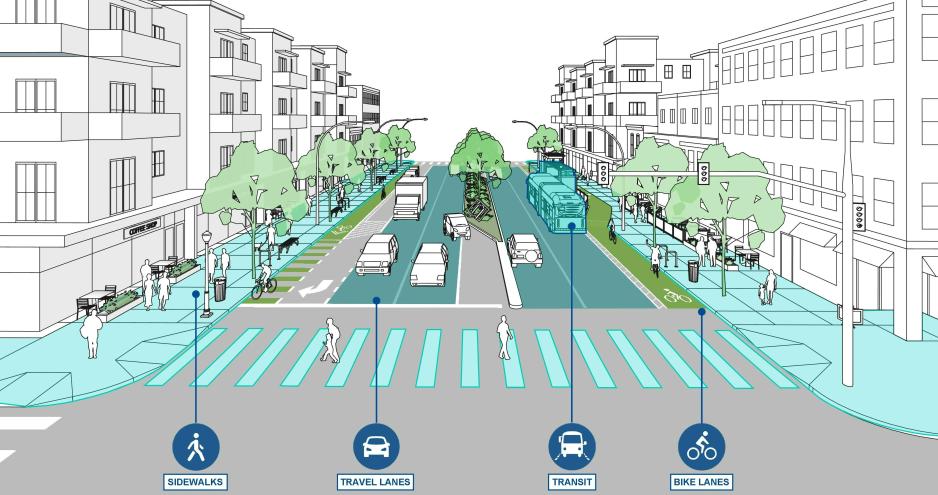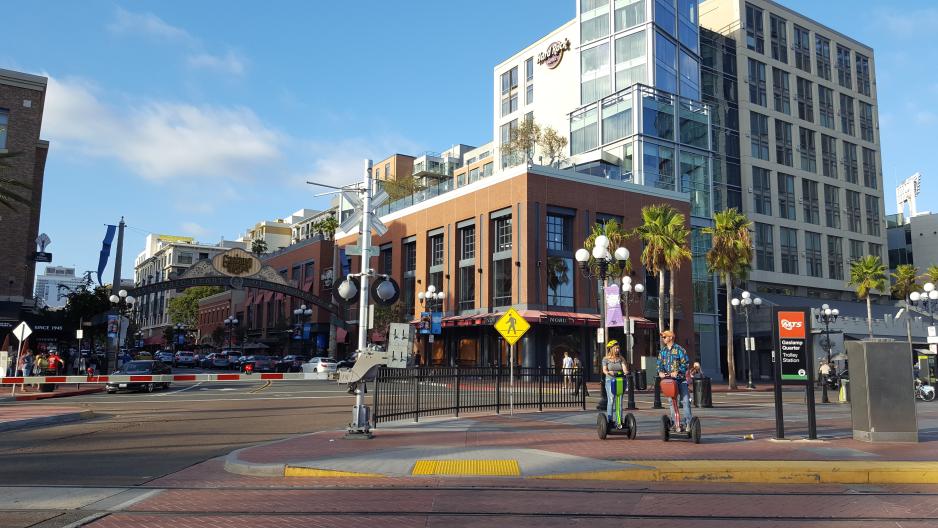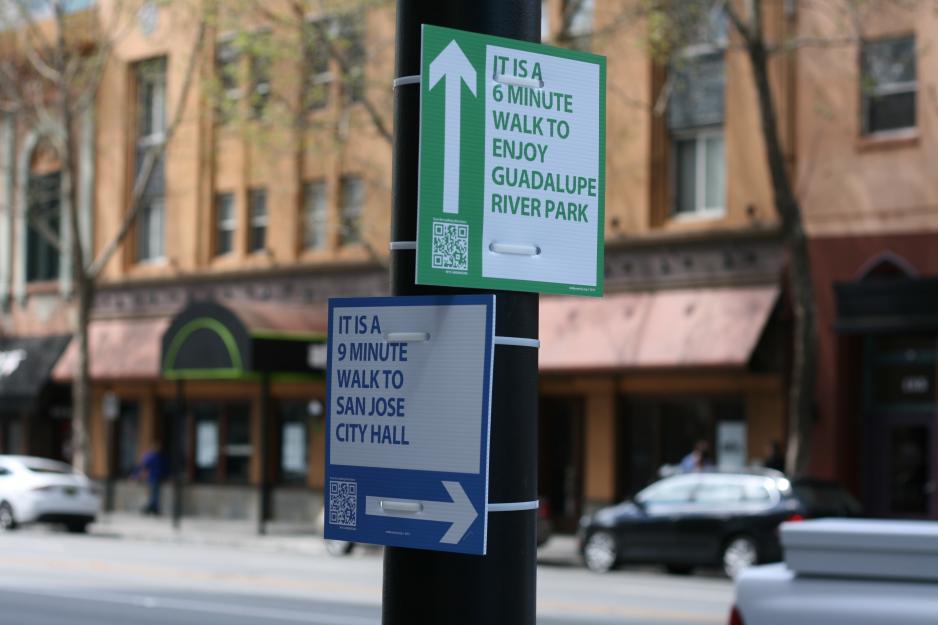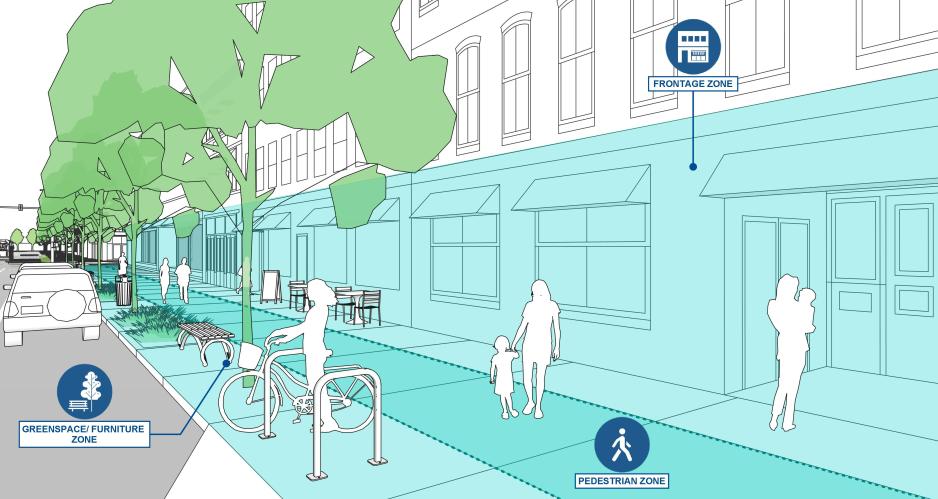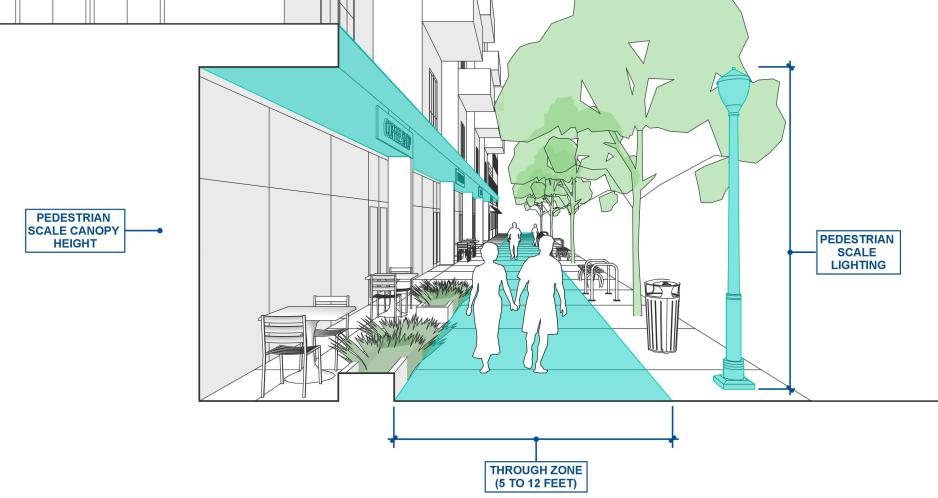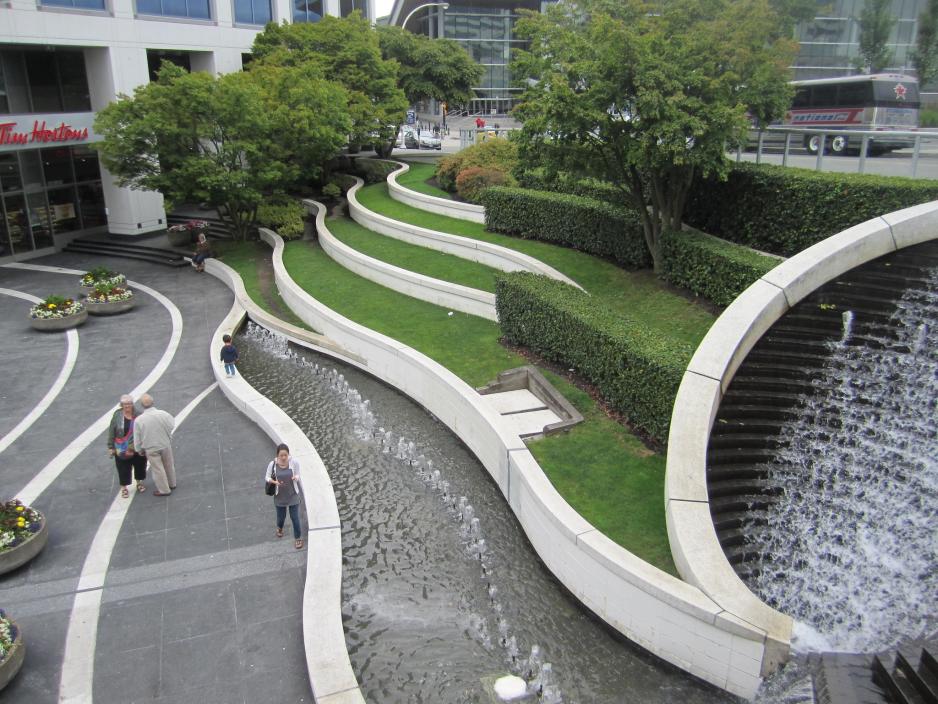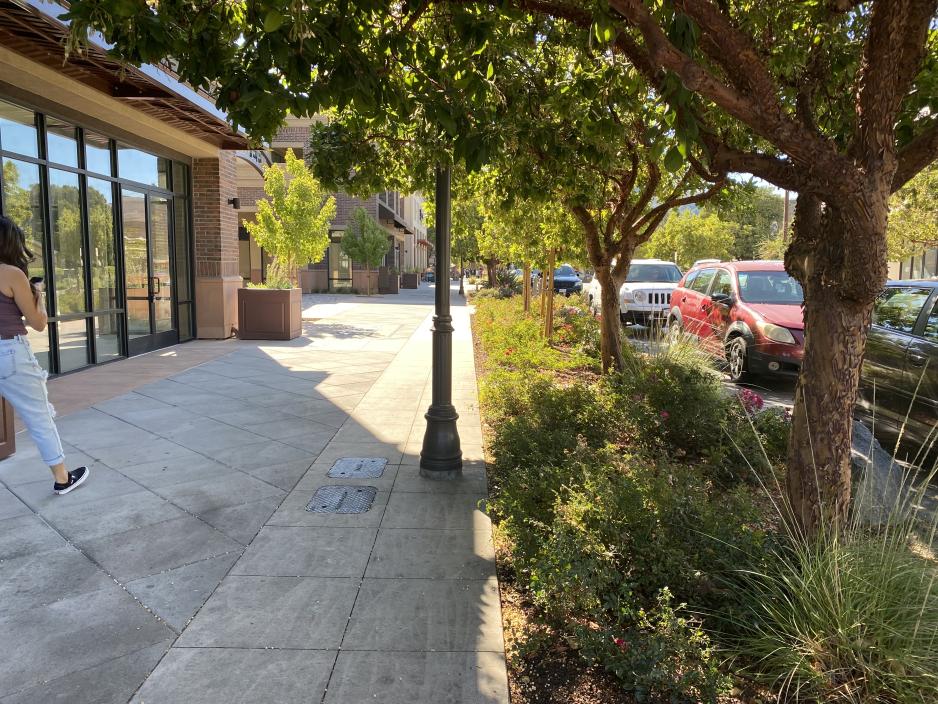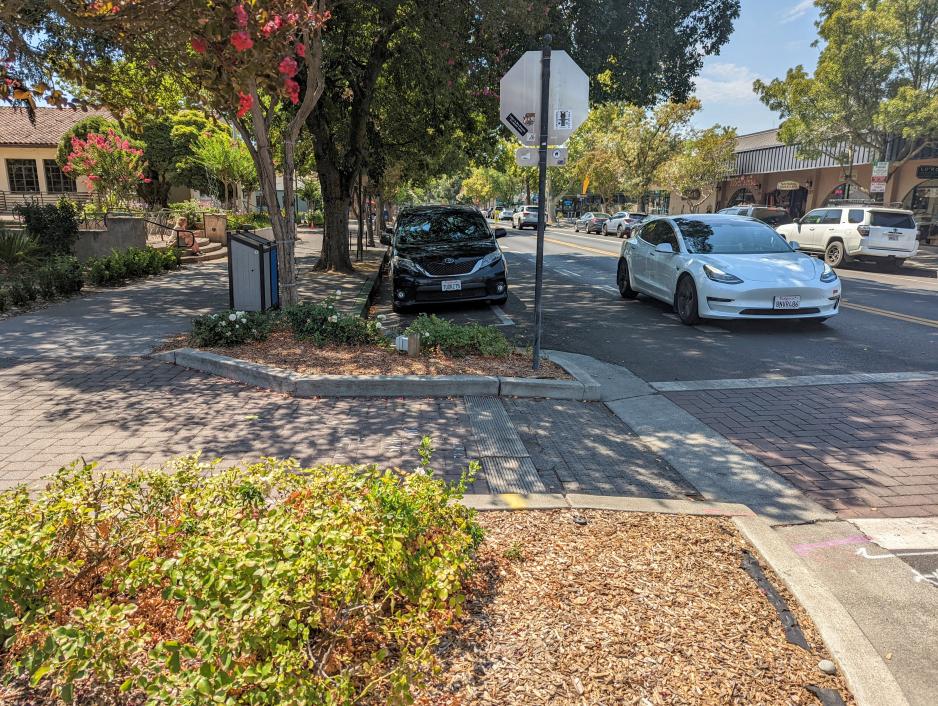Design high-quality complete streets that are safe, attractive and comfortable for all users.
Design complete streets holistically from building face to building face. Streets should be designed to ensure multimodal choice while focusing on placemaking. Look for opportunities for flexible space to allow for efficient vehicular movement during peak flows without compromising overall street safety and comfort.
- Provide opportunities for seating and socializing outside of the accessible paths of travel.
- Consider the daily habits of commuters and opportunities for spontaneous human interaction.
Visual cues, landmarks, and useful signage orient pedestrians with their surroundings and destinations and provide safe and easy navigation. Clear sight lines to and from station stops increase efficiency and accessibility to transit.
Create comfortable pedestrian environments to support public life and, critically, for accessing transit.
- Use high-quality, durable materials to increase longevity and minimize maintenance.
- Paving materials should be ADA compliant for all exterior travel paths and publicly accessible areas.
- Provide site furniture for public comfort, including benches, bike racks, trash receptacles and planters where appropriate.
- Provide a variety of seating choices to offer choice based on social preference and physical ability. Movable furniture, backless benches, benches with backs and arms are some of the many options to consider.
Consider sound as an important element of enjoyment of the public realm. Typically, we can choose what we look at but not necessarily what we hear. Soundscape is the concept of what is heard in the public realm. Sound may be considered good acoustic communication or noise pollution depending on the context and volume.
- Consider material choices and how they affect the soundscape, for example, glass facades reflect (and amplify) sounds while other materials may absorb sounds.
- Consider moving water in public spaces where noise buffering is desirable.
Integrate landscape elements strategically to protect and enhance the public realm. Landscape elements can provide shelter and shade, stormwater management, visual cues, screening, and buffering. Use landscape elements to screen an unwanted view, filter stormwater, provide a buffer between transportation modes, or provide wayfinding.
